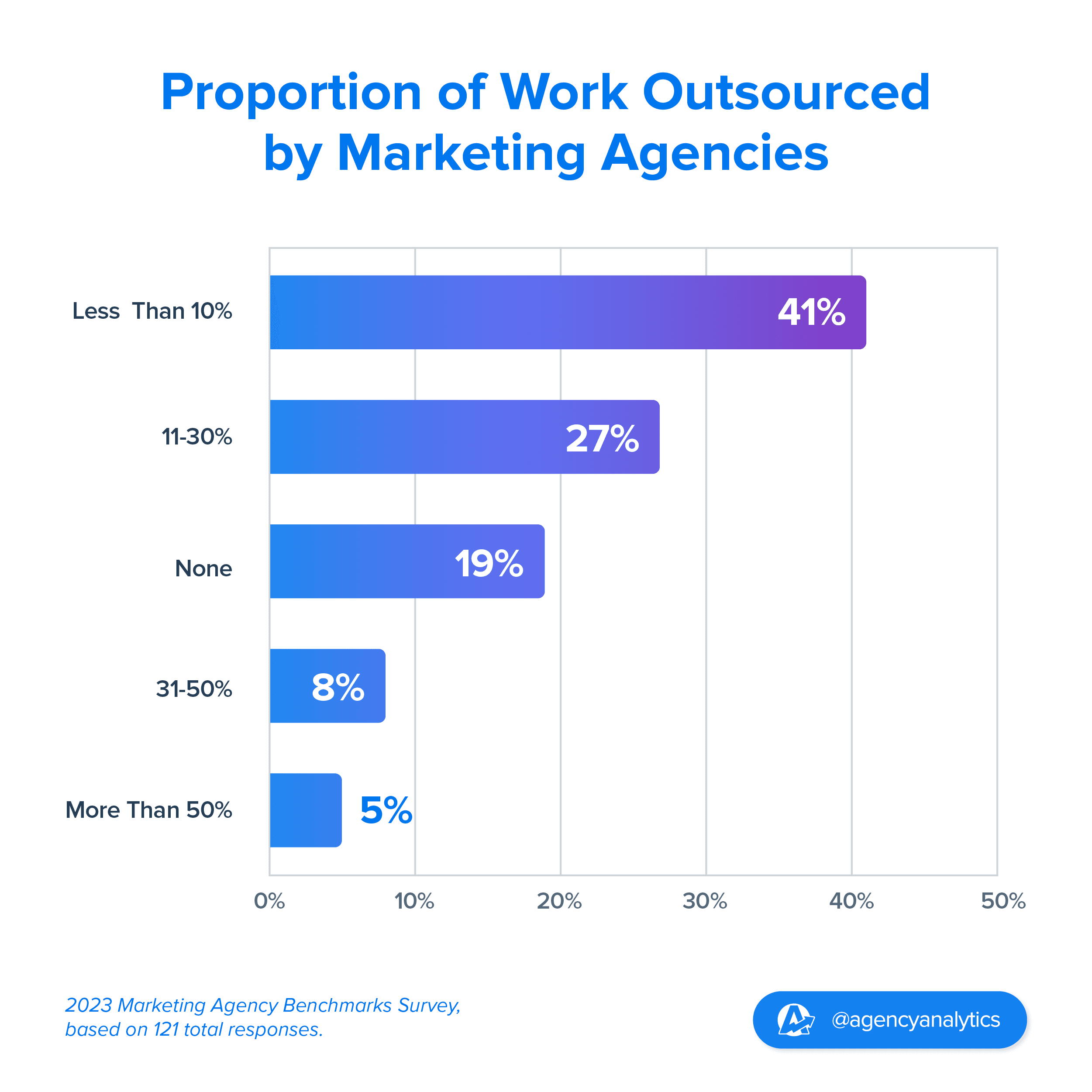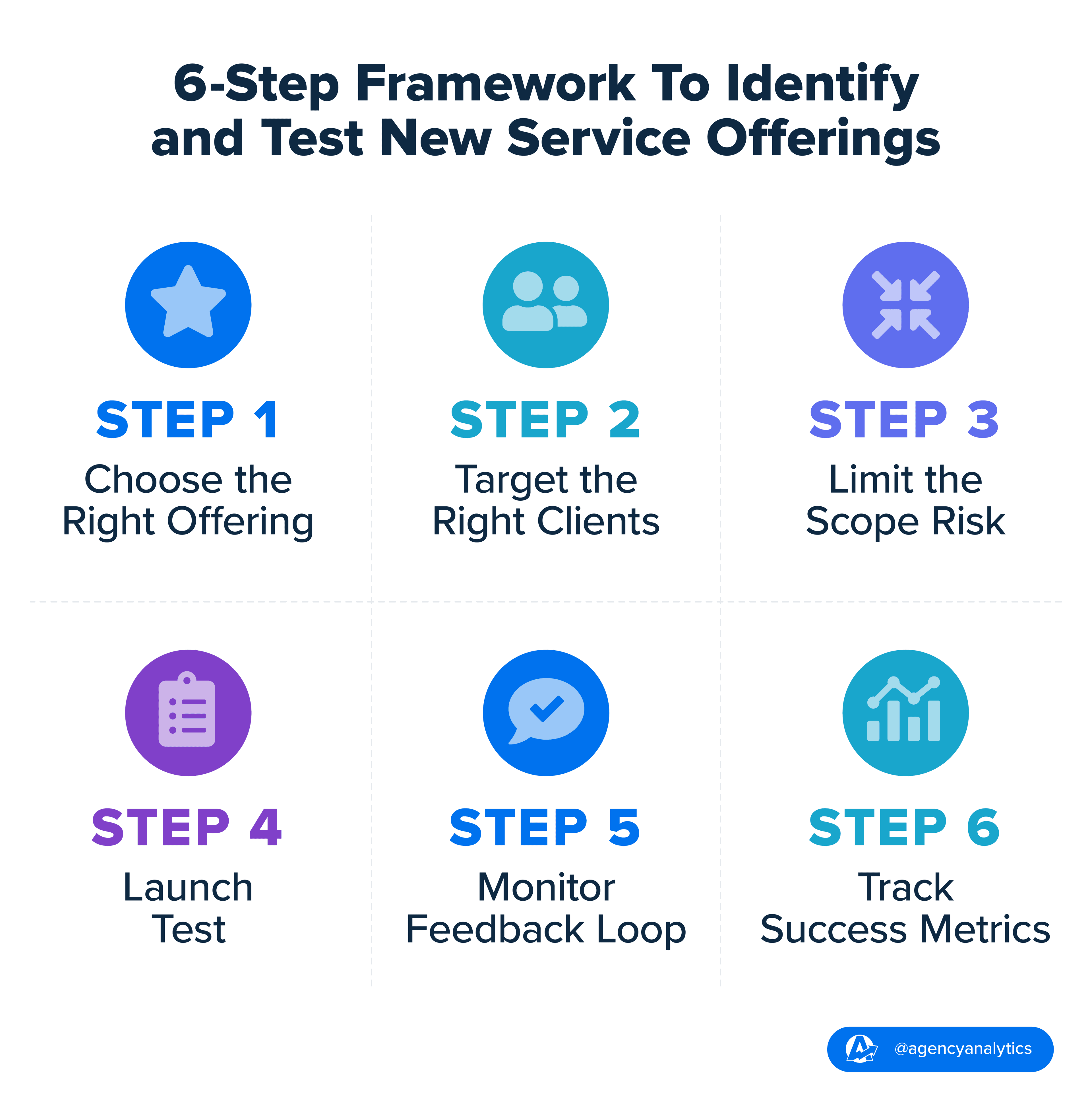Table of Contents
Scaling your agency without a strategic plan is like attempting to run a marathon without proper training—it's a recipe for early burnout and disappointment.
Imagine stepping up to the starting line, fueled by ambition, only to realize halfway through the race that your energy reserves are depleting faster than you’d anticipated. This mistake is similar to an agency rapidly scaling its service offerings and client base without a solid growth plan.
This is precisely what happened to Paul Spinak and David Sardinha and their agency, The Marketing Machine.
Founded in 1998 as a small independent marketing outfit, The Marketing Machine moved to scale its growth around 2006, aiming to offer its clients every service possible—printing services, wrapping vehicles, signage, promotional products, and more.
Our thinking at the time was to be as broad as possible in our service offerings. We wanted to do everything in-house. We were doing everything across the board. We grew very fast and hired a lot of people. And looking back, I think we grew too fast.
David Sardinha, VP & COO, The Marketing Machine

David Sardinha and Paul Spinak of The Marketing Machine.
The Marketing Machine wasn’t ready to weather a significant unforeseen roadblock ahead: the 2008 recession. Spinak and Sardinha were forced to scale back their growth significantly, downsize the agency, and move their offices.
Like many agencies that aim to grow too fast, The Marketing Machine had been sprinting, and ran out of steam. Today, thanks to a more measured digital growth strategy, the agency counts 50+ employees running more than 40 marketing campaigns.
In this article, we explain why and how successful agencies approach growth carefully to ensure they're not just part of the race but well-equipped with a strategy to reach the finish line successfully.
How Quickly Should a Marketing Agency Grow?
As a reporting solution designed specifically to meet the needs of marketing agencies, we chat often with our community of more than 7,000 agency clients. In hearing the stories of their agency growth trajectories, we’ve seen the same challenge mentioned again and again:
An agency in its infancy suddenly experiences a period of rapid expansion. Maybe they land a new client who immediately begins referring them to other business owners. Or maybe they take on a single large contract that represents a significant jump in billables—and the work hours to accompany it.
The agency is left standing at a precipice. They must answer a question that has the potential to influence the remaining course of the agency’s life cycle: How do we scale up to meet this exciting new opportunity without diminishing the success we’ve had to date?
Sure, it’s a positive problem to have—but it’s still a problem that needs to be solved.
Growth pace is critical when an agency decides it’s time to scale. Rapid expansion might seem appealing—more clients, more services, more profit—but it often comes with pitfalls that jeopardize the agency's stability and the quality of service provided to clients.
Much like training to run a marathon, ideal growth must be steady and manageable, ensuring that every aspect of the agency—from talent and customer acquisition to client management and service delivery—scales in harmony. The key lies in learning how to avoid the most common mistakes made by agency leaders when faced with this critical growth juncture.
Editor’s note: Need additional growth advice? Discover more agency management tips for growth on the AgencyAnalytics blog.
What Happens When an Agency Grows Too Fast?
When a burgeoning marketing agency sprints ahead without pacing itself, it often stumbles upon growth hurdles that threaten its steady progress and performance.
When I think about the lifecycle of a business, those first five years are pretty transformative, and you either succeed and grow and overcome, or you get overwhelmed, and you fail.
Kelsey Wagner, Founder, MyMediaMatters
Here's a look at the pitfalls of growing too fast:
Failure to Prioritize
Rapid growth leads to a scattershot approach to service offerings, where the agency tries to do too much too quickly. This lack of focus dilutes the quality of marketing services, as the agency spreads itself too thin across various areas, such as content marketing, social media marketing, and other digital marketing services.
Putting Out Fires Rather Than Thinking Strategically
Fast-paced expansion often results in a reactive mode of operation, where agency staff and the agency owner are constantly putting out fires. This leaves little room for strategic thinking or planning, making it difficult to align with long-term agency growth or adhere to a coherent marketing strategy.
Neglecting Foundational Business Actions
In the rush to scale, critical foundational actions such as documenting project management processes and conducting corporate marketing training may fall by the wayside. This oversight leads to inefficiencies and inconsistencies in how projects are managed and delivered, affecting the overall performance of the marketing agency.
Employee Burnout
For both full-service and specialized creative agencies, rapid growth puts immense pressure on team members, leading to burnout. Without effective resource management or project management software support, the workload becomes unmanageable, affecting employee well-being and productivity.
Client Dissatisfaction
As agencies prioritize expansion, the quality of interactions with existing clients and the effectiveness of marketing campaigns often suffers. This leads to dissatisfaction among existing clients and may cause some to seek support from competing agencies, leading to increased churn. Further, this may even harm the agency's reputation, making it challenging to attract prospective clients.
Strain on Infrastructure
A marketing agency’s infrastructure may struggle to keep up with rapid growth. This includes physical resources and digital assets, such as the marketing agency's website. Failure to scale these elements in line with business growth will lead to operational bottlenecks.
Lack of Market Alignment
Fast growth often also means less time to understand market trends and the target audience, leading to services that may not fully meet client needs or capture the latest digital marketing opportunities.
When an agency grows too quickly, it risks prioritizing expansion over quality, strategic planning, and client satisfaction. To avoid these pitfalls, a successful agency will balance its growth journey with careful planning, employee support, and a steadfast focus on delivering high-quality marketing services.
7 Agency Growth Mistakes To Avoid
From the initial excitement of adding new talent to the team to the relentless pursuit of meeting growing client demands, each phase of expansion requires a delicate balance.
One of the most impactful leadership mistakes I made in the early days of my agency was neglecting to set clear expectations from the outset, both within my team and with our clients. The assumption that everyone was on the same page, without expressly articulating our goals, timelines, and deliverables, created a ripple effect of challenges.
Adam Stewart, Founder, Digital Bond
Let’s take a look at seven of the most common agency growth mistakes, and some strategies to avoid succumbing to each one’s pitfalls.
1. Hiring Too Many People, Too Fast
Expanding the team rapidly often leads to a mismatch of skills, diluted company culture, and increased overhead without proportional growth in revenue. In a rush to meet growing demand, agencies might hire quickly, compromising the quality of hires or integrating new employees into the team, disrupting workflow and team dynamics.
Solution
Develop a strategic hiring roadmap that aligns with business forecasts and client projects. Prioritize roles that add immediate value and ensure a thorough onboarding process to maintain company culture and operational efficiency.
Our biggest recent challenge can probably be summed up as ‘growing pains,’ working through the inevitable issues that come as you go from having a handful of employees to nearly 20. From a high level, it’s about nurturing the culture and developing the systems, tools, and practices that allow you to keep scaling up and evolving while maintaining the attention to clients and care for the team
Brendan Chard, Owner, The Modern Firm
2. Overworking the Existing Team
On the other hand, expecting the current team to handle an increasing workload without adequate support will lead to stress, decreased job satisfaction, and high turnover rates. As the agency takes on more projects, the existing team may feel overwhelmed, impacting the quality of work and client relationships.
In the early years as an agency, you take on anything and everything that comes your way as you are trying to grow your client base. Although effective for startups, this method causes staff burnout and dilutes your agency’s focus if you take on too much.
Peter Jasniewski, President and CEO, WSI Comandix
Solution
Regularly assess team workload and provide support through change management—hiring, outsourcing, or streamlining agency processes. If it’s too soon to hire new full-time staff members, leverage the freelance workforce to fill in the gaps.
Our Marketing Agency Benchmarks Survey revealed that 81% of agencies outsource some of their work. Typically, this work represents less than 10% of agency output, indicating that freelancers are most often used to shoulder the labor generated during those “boom” moments when workload exceeds what the internal team is capable of.

Promote a healthy work-life balance by setting realistic deadlines and encouraging time off–even, or perhaps especially, when the pace of work is feeling hectic.
3. Micromanagement
Trying to control every aspect of operations stifles employee growth and innovation, leading to a demotivated workforce. Leaders who micromanage often hinder the agency's ability to scale effectively, as decision-making becomes bottlenecked and employees feel undervalued.
Solution
Empower team members by delegating responsibilities and trusting their expertise. Establish clear goals and KPIs and provide feedback and guidance as needed, fostering a culture of accountability and growth.
We get it: You’re growing fast, you’ve always done everything yourself, and it’s scary to hand over the reins to someone else. But remember that delegating helps your team learn and get better at their jobs and makes your workload lighter. Plus, giving out tasks will build your team’s confidence and excitement about their professional growth trajectory at the agency. It's a win for everyone!
The worst mistake marketing agency leaders can make is gripping too tight to their own preferences and consequently not trusting their team.
Ben Barker, Founder & Director, Hoan Marketing
4. Shiny Object Syndrome
Constantly pursuing the latest trends or tools distracts from core business objectives and strains resources. The allure of new technologies or methodologies leads agencies to divert focus from proven strategies, focus on vanity metrics, and waste time and resources on initiatives that don't drive meaningful results.
For instance, you see some agencies focused on influencer marketing, but your agency is a master at SEO. Sure, there’s big money in influencer marketing right now, but is diverting resources to this service going to add to your bottom line or detract from your niche expertise?
Solution
Conduct thorough evaluations of new opportunities, assessing their potential impact against strategic goals. Implement a structured decision-making process to ensure new initiatives support core business objectives.
While it’s tempting to hop on every trend that piques your clients’ interest, you’ll need to consider if a “trendy” service is well-suited for your agency.
Is the “shiny object” complementary to your current service offering? (For example, a social media agency offering influencer marketing is a logical extension.)
Does this trend benefit current or potential clients?
Does your team have the skillset and capacity to offer this new service?
Are our direct competitors offering this service? Will we need to explore this trend to remain competitive?
Follow this six-step process to evaluate if offering a new service is the right option for your agency.

You have to be intentional about the actions you’re taking to move the company forward.
Stena Lambert, Director, Vortala Digital
5. Ad Hoc Processes
Relying on makeshift or inconsistent workflows leads to errors, inefficiencies, and client dissatisfaction as the agency scales. Without standardized processes, agencies face challenges in managing projects effectively, particularly as the volume and complexity of work increase.
Take client reporting, for example. An agency may get away with manual reporting using Excel spreadsheets when they only have a handful of clients, but when they suddenly have 30 clients and are still spending three hours per report, it no longer makes sense. That’s where implementing automated processes with tools like AgencyAnalytics ensures efficiency, accuracy, and improved client satisfaction.
Solution
Invest time mapping out and documenting key processes, from client onboarding to project delivery. Use project management tools to automate and track tasks, ensuring consistency and clarity in workflows. Implement the Entrepreneurial Operating System (EOS) to amplify marketing productivity, solidify the vision across team members, cultivate day-to-day traction, and pave the way for sustained growth and enhanced revenue. Finally, and in our opinion most importantly, use AgencyAnalytics to automate client reporting and win back billable hours.
We didn’t have a client onboarding process, and we didn’t have anything streamlined for delivering monthly traffic reports to our clients. We were doing everything manually.
Kelsey Wagner, Founder, MyMediaMatters
Are EOS Rocks The Secret To Streamlining Your Agency? - AgencyAnalytics
6. Taking on Too Much Overhead
Expanding physical assets or making significant upfront technological investments may lead to financial strain, especially if revenue growth fails to meet expectations. Agencies might be tempted to upscale their office space or invest in expensive software suites in anticipation of growth, which leads to increased fixed costs and financial vulnerability.
Solution
Opt for scalable and flexible options like shared office spaces or subscription-based software services that adjust to the agency's needs over time. Carefully evaluate each investment for its direct contribution to revenue growth or operational efficiency.
As a small agency, we don't have the luxury of having a lot of overhead. We need to be efficient with our time in order to be profitable. When we spend time on manual tasks, such as report generation, we are taking away time from more important tasks, such as developing and implementing marketing campaigns for our clients. This can lead to missed deadlines, unhappy clients, and lost revenue.
Ben Paine, Managing Director, Digital Nomads HQ

Do away with manual reporting and save billable hours each month. Automate your client reporting with custom dashboards for your clients in just a few clicks. Try AgencyAnalytics for free for 14 days—no credit card required.
7. Financial Pressures
Rapid expansion often requires significant investments, potentially leading to debt or cash flow issues that compromise the marketing agency's financial stability. Agencies who borrow without a solid plan might find themselves in a precarious position if they overextend financially, relying on future revenues that may not materialize as expected, leading to unsustainable debt levels and cash flow crises.
Solution
Maintain a conservative financial strategy that emphasizes liquidity and flexibility. Use forecasting to anticipate cash flow needs and secure financing with favorable terms. Focus on partnerships that make your agency more efficient and resilient. Establish a reserve fund to cushion against unforeseen financial challenges, ensuring the agency weathers periods of uncertainty.
And always have a plan.
By identifying, vetting, and investing in the best partnerships, we save on overhead and increase turnaround times which allows us to focus on innovation and service quality. This helps us to stay lean, be nimble in growth, and keep pace with other agencies that have more financial resources and team members.
Blake Baxendell, CEO, Wahha Design
The hesitancy to incur debt is also common among agencies, as Cori Kohlmeier of Advantage Marketing reflects, "I think a lot of small businesses get caught up in an 'I don't want to owe anyone anything' mindset," but she also notes how important it has to have a level of comfort to execute client campaigns and establish credit early on in the agency business.
By creating a financial buffer, Kohlmeier ensured her agency's self-sufficiency and allowed for strategic expansion when the opportunity to purchase another agency arose. Financial assistance, when strategically acquired, is a cornerstone for sustainable agency growth and stability. Kohlmeier further elaborates on the importance of a solid financial strategy: "A lot of these big companies borrow their money, they don't use their own money," she notes, underscoring the lesson that borrowing with a plan fuels growth without compromising financial stability or service quality.
Benefits of a Slow and Steady Approach to Growth
Though there’s no denying the allure of a “skyrocket to stardom” type agency growth story, the truth is that there’s a great deal of benefit to be found in adopting a slow and steady approach to scaling an agency. Let’s take a look at a few:
Enhanced Quality Control
A gradual growth pace allows for more attention to detail in every project and client interaction. This meticulous attention helps maintain high-quality standards crucial for client satisfaction and retention.
Stronger Client Relationships
When growth is achieved at a steady pace, there's more opportunity to deepen relationships with existing clients. This approach fosters trust and loyalty, which are invaluable for referrals and long-term business.
Sustainable Staff Development
A slower growth trajectory gives more space for nurturing talent within the agency. This ensures that team members grow and the agency builds a robust and skilled workforce committed to the agency's vision.
Cultural Integrity
Maintaining and cultivating a strong agency culture is easier when growth is controlled. New team members are assimilated more effectively, ensuring that the agency's core values and ethos are preserved even as the team expands.
Operational Stability
Gradual scaling allows for the incremental improvement of operational processes and systems. This ensures that the agency's infrastructure evolves in step with its growth, preventing operational bottlenecks and inefficiencies.
Financial Health
A slow and steady growth model often entails more predictable financial planning and less strain on the agency's resources. This leads to more sustainable financial health with fewer risks of overextension.
Adaptability
When growth is deliberate and measured, it’s possible to adapt to market changes, client needs, and new opportunities without the chaos that rapid scaling brings.
Risk Mitigation
A gradual approach to scaling helps identify potential risks and address them before they escalate. This cautious expansion reduces the likelihood of overreaching and facing unsustainable commitments.
A Measured Pace Wins the Agency Growth Race
Remember: Planning your marketing agency growth journey is much like preparing for a marathon.
Agencies must balance growth with operational stability and employee well-being to prevent burnout and maintain a healthy, productive team, just as a runner must balance training with recovery to avoid injury. Agencies must also remain adaptable and align their growth with market trends and client needs, ensuring a sustainable and strategically sound expansion.
Scaling a business is no easy undertaking. To be successful, a company must have a solid plan in place that accounts for every aspect of growth, from managing resources and hiring new employees to expanding into new markets and opening new branches. But, perhaps most importantly, scaling a business requires time.
Ruben Roel, President & Founder, Investigator Marketing
Just as runners must pace themselves, build endurance, and prepare strategically for the long haul, agencies must approach growth with a steady, measured pace. Sprinting at the start of the race will only lead to burnout and compromise the quality of service, and your digital agency will lose steam before reaching the finish line.

Written by
Francois Marchand brings more than 20 years of experience in marketing, journalism, and content production. His goal is to equip agency leaders with innovative strategies and actionable advice to succeed in digital marketing, SaaS, and ecommerce.
Read more posts by Francois MarchandSee how 7,000+ marketing agencies help clients win
Free 14-day trial. No credit card required.





